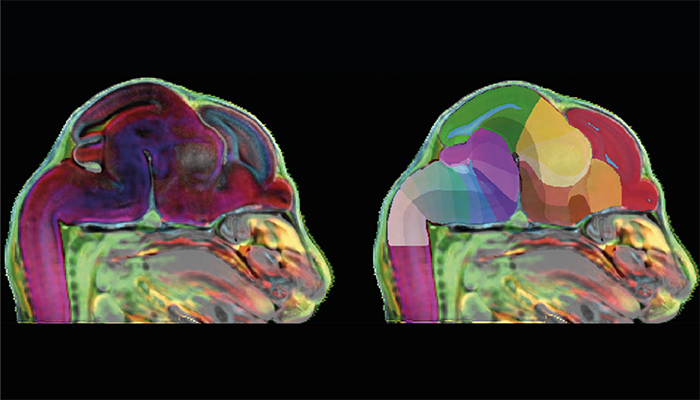
Credit: Kim Lab / Penn State Creative Commons
A 3D atlas of the developing mouse brain has been created by researchers at Penn State College of Medicine using high-resolution imaging techniques. The atlas represents a common reference framework for analyzing brain architecture in both normal and diseased states, and it could be used to study brain development as well as neurodevelopmental disorders.
"Maps are a fundamental infrastructure to build knowledge upon, but we don't have a high-resolution 3D atlas of the developing brain," said Yongsoo Kim, associate professor of neural and behavioral sciences at Penn State College of Medicine and senior author on the study, in a press release. "We are generating high-resolution maps that we can use to understand how the brain grows under normal circumstances and what happens when a brain disorder emerges."
The team employed magnetic resonance imaging (MRI) to capture the overall form and structure of the brain across seven developmental time points – from the embryonic period to the immediate postnatal stage. The researchers also used light sheet fluorescence microscopy (LSFM) to visualize the developing brain at single-cell resolution, enabling precise mapping of brain cells and structures. By integrating these two imaging techniques, the researchers created a unified 3D framework – the Developmental Common Coordinate Framework (DevCCF).
"Without this 3D map of the developing brain, we cannot integrate data from emerging 3D studies into a standard spatial framework or analyze the data in a consistent manner," Kim added.
Putting the atlas into practice, the team investigated GABAergic neurons, a type of nerve cell involved in crucial brain functions and implicated in several neurological disorders, including schizophrenia and autism. The researchers were able to trace the development of GABAergic neurons across different brain regions, providing insights into how these cells arise during normal development – and what might go wrong in disease states.
The 3D atlas is freely accessible through an interactive web-based platform and, according to Kim, “It will drive the next evolution of brain research driven by machine learning and artificial intelligence."




